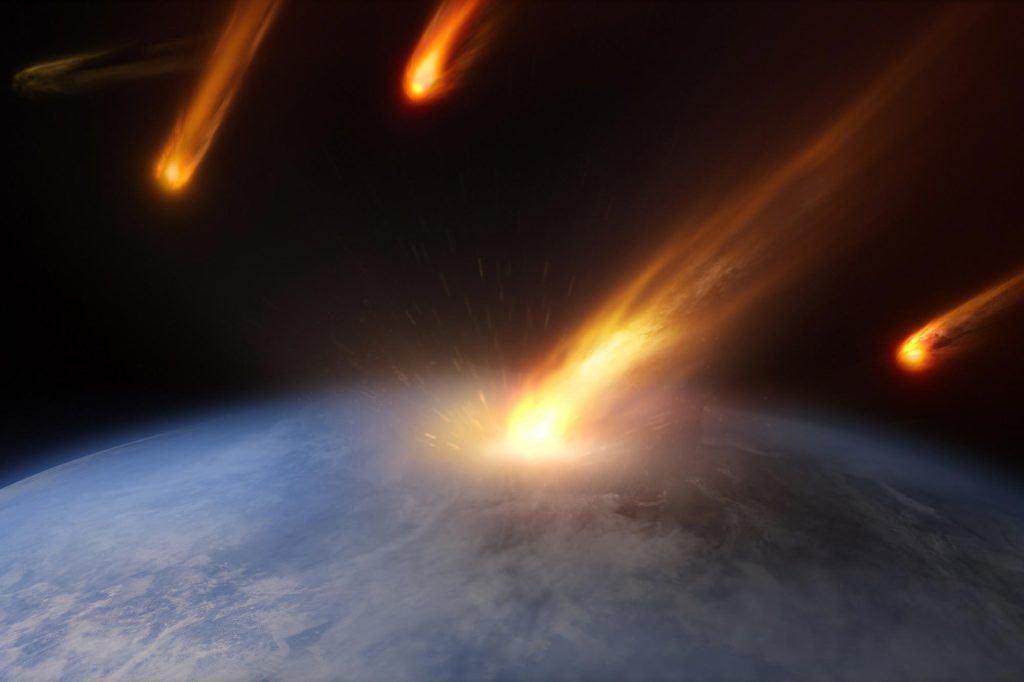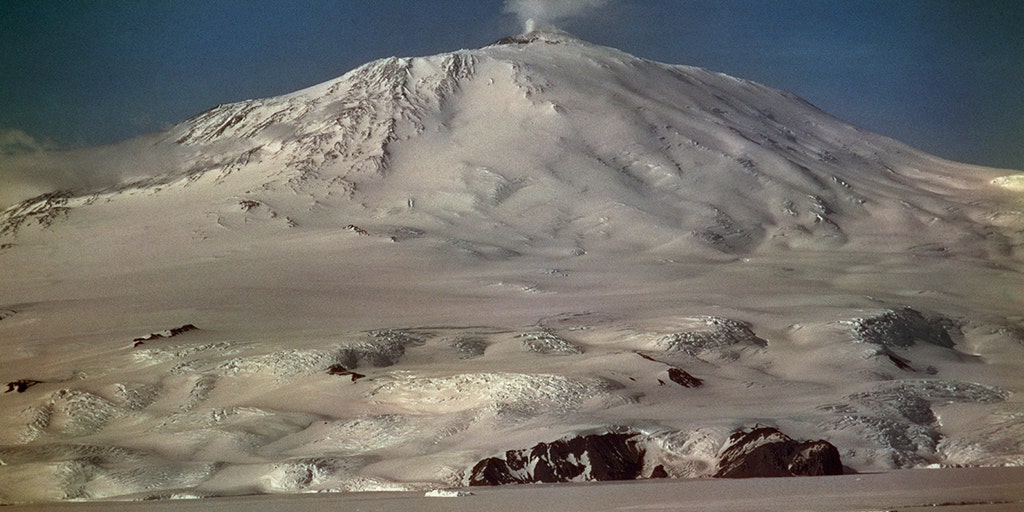
La scoperta di un grande cratere sotto il Nord Atlantico rivela che più di un asteroide avrebbe potuto uccidere i dinosauri.
Un cratere scoperto di recente sotto il fondale marino indica che più di un asteroide potrebbe aver colpito la Terra durante il periodo in cui i dinosauri si sono estinti.
Gli scienziati hanno scoperto le prove di un cratere da impatto di un asteroide sotto l’Oceano Atlantico settentrionale. Potrebbe costringere i ricercatori a ripensare a come i dinosauri siano giunti alla fine del loro regno.
Il team ritiene che il cratere sia stato causato dalla collisione di un asteroide con la Terra circa 66 milioni di anni fa. Più o meno nello stesso periodo in cui l’asteroide Chicxulub colpì la Terra al largo delle coste dell’odierno Yucatan, in Messico, spazzando via i dinosauri.
“Questo potrebbe aver causato uno tsunami di oltre 3.000 piedi, oltre a un terremoto di magnitudo 6,5”. – Veronica Bray
Il cratere, di oltre 8 chilometri di diametro, è stato scoperto utilizzando misurazioni sismiche, che consentono agli scienziati di esplorare le profondità della superficie terrestre.
Veronica Bray, ricercatrice presso il Planetary and Lunar Laboratory dell’Università dell’Arizona, coautrice di uno studio su progresso della scienza Nel dettaglio la scoperta. È specializzato in crateri situati in tutto il sistema solare.
Prende il nome da una vicina montagna sottomarina, il cratere di Nader è sepolto fino a 1.300 piedi (400 metri) sotto il fondo del mare a circa 250 miglia (400 chilometri) al largo della costa della Guinea, nell’Africa occidentale. Secondo il team di ricerca, l’asteroide che ha creato il cratere Nader appena scoperto potrebbe essere stato formato dallo schianto di un asteroide originale o da uno sciame di asteroidi in quel periodo di tempo. Se il cratere sarà confermato, il cratere sarà uno dei meno di 20 crateri archeologici marini confermati trovati sulla Terra.

Veronica Bray, fotografata qui durante una visita al Meteor Crater nel nord dell’Arizona, è un’esperta di formazione di crateri. Credito: Sarah Sutton/Moon and Planetary Laboratory
Qual è l’impatto dell’asteroide?
Bray ha utilizzato simulazioni al computer per determinare che tipo di collisione si era verificata e quali fossero i probabili effetti. Le simulazioni indicano che il cratere è stato causato dall’impatto di un asteroide largo 1.300 piedi (400 metri) in 1.600-2.600 piedi (500-800 metri) di acqua.
“Questo potrebbe aver causato uno tsunami di oltre 3.000 piedi, nonché un terremoto di magnitudo 6,5”, ha detto Bray. “Sebbene molto più piccolo della catastrofe globale dell’effetto Chicxulub, Nader ha contribuito in modo significativo alla devastazione locale. E se troviamo uno dei “fratelli” Chicxulub, si apre la domanda: ce ne sono altri?”
La dimensione stimata dell’asteroide lo collocherebbe più o meno alla pari asteroide bennoObbiettivo Osiride Rexguidato da Uarizona[{” attribute=””>NASA asteroid sample return mission. According to Bray’s calculations, the energy released from the impact that caused the Nadir crater would have been around 1,000 times greater than the tsunami caused by the massive underwater eruption of the Hunga Tonga-Hunga Ha’apai volcano in the Polynesian country of Tonga on January 15.
“These are preliminary simulations and need to be refined when we get more data,” Bray said, “but they provide important new insights into the possible ocean depths in this area at the time of impact.”
What does the crater look like?
The crater was discovered somewhat by accident by Uisdean Nicholson, a geologist at Heriot-Watt University in Edinburgh. He was examining seismic reflection data from the seabed during a research project dedicated to seafloor spreading, the geologic process that caused the African and American continents to drift apart, thereby opening the Atlantic Ocean.
“I’ve interpreted lots of seismic data in my time, but had never seen anything like this. Instead of the flat sedimentary sequences I was expecting on the plateau, I found an 8.5-kilometer depression under the seabed, with very unusual characteristics,” Nicholson said. “It has particular features that point to a meteor impact crater. It has a raised rim and a very prominent central uplift, which is consistent for large impact craters.
“It also has what looks like ejecta outside the crater, with very chaotic sedimentary deposits extending for tens of kilometers outside of the crater,” he added. “The characteristics are just not consistent with other crater-forming processes like salt withdrawal or the collapse of a volcano.”
The asteroid crashed around same time as the dinosaur killer
“The Nadir Crater is an incredibly exciting discovery of a second impact close in time to the Cretaceous–Paleogene extinction,” said study co-author Sean Gulick, an impact expert at the University of Texas at Austin. “While much smaller than the extinction causing Chicxulub impactor, its very existence requires us to investigate the possibility of an impact cluster in the latest Cretaceous.”
According to the seismic data, the sediments impacted by the asteroid likely correspond with the Cretaceous-Paleogene boundary – a sedimentary layer demarcating the end of the Cretaceous period and last known occurrence of dinosaurs. However, there is some uncertainty about the precise time of impact, limited by the resolution of the data.
“Despite 4 billion years of impactors hitting Earth, only 200 have been discovered,” Gulick said. “It is thus exciting news whenever a new potential impact is discovered, especially in the hard-to-explore marine environment.”
Nicholson has already applied for funding to drill into the seabed to confirm that it’s an asteroid impact crater and test its precise age.
Reference: “The Nadir Crater offshore West Africa: A candidate Cretaceous-Paleogene impact structure” by Uisdean Nicholson, Veronica J. Bray, Sean P. S. Gulick and Benedict Aduomahor, 17 August 2022, Science Advances.
DOI: 10.1126/sciadv.abn3096

“Devoto esploratore. Pluripremiato sostenitore del cibo. Esasperante umile fanatico della tv. Impenitente specialista dei social media.”


/cdn.vox-cdn.com/uploads/chorus_asset/file/25404717/delta_app_store.png)

More Stories
Questo vulcano attivo in Antartide emette vera polvere d'oro
Il nucleo di Plutone è stato probabilmente creato da un'antica collisione
Gli scienziati dell'UF sperano di fermare la malattia mortale dell'abbronzatura nelle palme della Florida